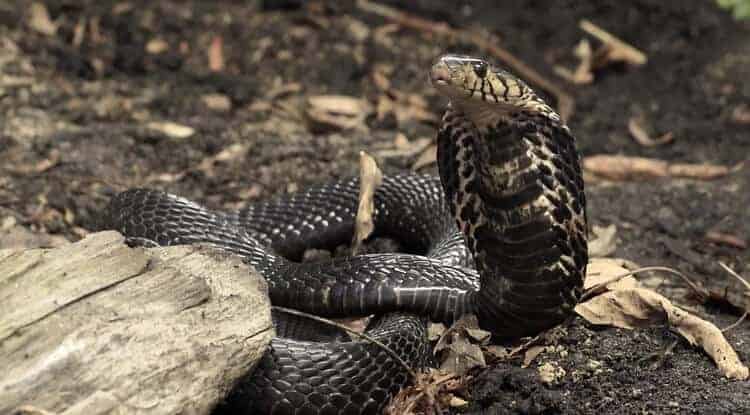Venomous snakebites kill an estimated 150,000 people around the world each year — amid severe shortages of fair-priced antivenom and health providers trained to use the lifesaving treatment.
Now an international alliance with experts from the United States, Mexico and Africa has come together to address the issue with a project to improve access to quality antivenoms and save lives in regions with high snakebite incidence.
The alliance consists of the VIPER Institute at the University of Arizona; the African Society of Venimology (Société Africaine de Venimologie, or SAV-ASV); and the Institute of Biotechnology of the National Autonomous University of Mexico (Instituto de Biotecnología, or IBt/UNAM).
The three partners are developing a series of videos, with English, French and Spanish subtitles, to educate African health professionals about the appropriate use of antivenom and best practices for the care of snakebite patients. (A preview module is available online in French, English and Spanish.) The alliance also is working with government, industry and other collaborators to develop and introduce high-quality, fair-priced antivenom treatments to sub-Saharan Africa.
“In short, the world lacks sufficient antivenom for those who need it most; most doctors lack training to use it; and the per-dose cost to provide antivenom in low quantities is extremely high,” said Dr. Leslie Boyer, director of the UA’s Venom Immunochemistry, Pharmacology and Emergency Response, or VIPER, Institute. Correcting the problem will require simultaneous effort by physicians, patients, ministries of health and drug companies, she said.
Ensuring sub-Saharan Africa has sufficient fair-priced antivenom also will benefit the United States and other Western nations. “The United States needs a legal and affordable way to obtain successful world antivenoms for the rare cases where our citizens are bitten by snakes from other places,” Boyer explained.
Achille Massougbodji, president of the African Society of Venimology, said, “Roughly 5 million people are bitten by venomous snakes each year worldwide, of whom about 150,000 die. The problem is especially severe in sub-Saharan Africa, where we have had shortages of good antivenom for many years. Experts in the African Society of Venimology are working to reduce the number of people who die or are disabled, but we need safe, effective antivenom.”
Alejandro Alagón, professor at IBt/UNAM, said, “Making good antivenom for a region — such as sub-Saharan Africa — depends on excellent collaboration and communication. We need to know exactly which snake venoms to use, how big a dose is required and what the pharmacy storage conditions are like. The biotechnology alliance needs to have the best possible information from experts in Africa.”
Antivenoms developed by Alagón and colleagues within the alliance are used to treat 1,000 patients per day around the world.
“Modern technology makes it possible to manufacture sufficient quantities of high-quality, heat-stable antivenom, but market conditions in Africa can be very challenging. Certification of good products by trusted authorities, and large-scale purchases by governments, have helped to bring quality up and costs down,” said Juan López de Silanes, president of Inosan Biopharma, which manufactures antivenom for use in Africa, the Middle East, Europe and North America, including a coral snake antivenom currently in clinical trials in the United States.
“Even a certified, high-quality antivenom won’t save lives unless it is properly used,” Boyer said. “Effective education of doctors, nurses, public health professionals and the public has to happen in advance — because an incorrectly treated snakebite can kill in a matter of hours. And making it possible for doctors to treat a cobra or mamba bite effectively is doubly difficult in North America, where the smaller number of cases means that medical teams are less-prepared than in Africa.”
To help meet these challenges, the international snakebite treatment alliance is collaborating with Ray Morgan, producer of the acclaimed documentary “The Venom Interviews,” which details the activities of U.S. herpetologists involved in venom production and research. Together, the group is producing the series of short training videos, which will become available over the coming year.
“Today’s video technology allows international experts to share information fast, anywhere in the world. Doctors, scientists, government representatives and businesses in Africa, Mexico and the United States can work together like never before, and they can post their knowledge online, where colleagues and students can find it at a minute’s notice, whether they speak English, French or Spanish,” Morgan said.
Noted physician and epidemiologist Dr. Jean-Philippe Chippaux, founder of the SAV-ASV, said, “By working together and applying modern communications and manufacturing technology, we can overcome the vicious circle of antivenom shortage that has plagued sub-Saharan Africa for decades. One of the greatest needs is for the training of health personnel at all levels. The African Society of Venimology is enthusiastic to share our knowledge with the Institute of Biotechnology at UNAM and the VIPER Institute at the UA and to create a set of training modules for the benefit of medical professionals in Africa and around the world.”



its is a great post. thank you for give me a biggest post.
I have a small site plz give me some advice how to make its as like your blog
http://jobs24hunt.com